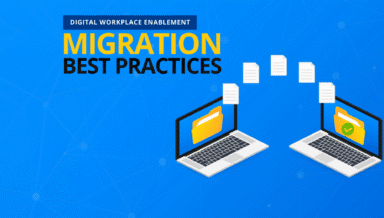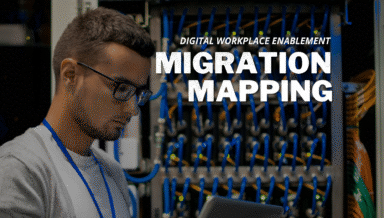Leverage the Community for Your SharePoint 2007 Migration

On October 10th, Microsoft will end support for SharePoint Server 2007. For many organizations, Microsoft Office SharePoint Server (MOSS) 2007 was the version that was able to see adoption across the enterprise, paving the way for the break-out success of SharePoint 2010 and a truly enterprise-wide platform. The 2007 version is where the concept of SharePoint as a “Swiss Army knife” was formed, with the idea that it could be shaped into whatever your organization needed it to be.
If you followed that line of thinking, and shaped your SharePoint 2007 environment into a fully-customized and deeply-integrated solution to meet the unique needs of your organization, the thought of migrating off of the platform probably seems daunting. I’ll admit that I am a big fan of “If it ain’t broken, why fix it?” approach to technology. In fact, I often tell audiences to ignore the sometimes high-pressure sales tactics of Microsoft and other OEMs who try to talk customers into upgrading solutions without first understanding the cost of moving — and the cost of not moving (missed opportunities). However, as we’re talking about SharePoint 2007 specifically, I believe that the latest versions (whether on-premises or online as part of Office 365) have dramatically improved the capability and user experiences of SharePoint.
By not moving to SharePoint 2016 or Office 365, you’re losing measurable productivity and business value.
SharePoint migration is not just about moving your sites and content to a new system, but should be viewed as an opportunity to correct mistakes and problems, to reorganize and reinvigorate your environment, and to fully leverage all of the features and capabilities that SharePoint has to offer. And because you have waited so long to move from your 2007 environment, you also have the benefit of many years of community experience. I would venture a guess that there is no workload scenario or customization that someone in the community has not experienced and conquered. Now it’s up to you to leverage that learning.
In an article earlier this year (SharePoint 2007 End of Life: Your Last Chance to Evolve), Shyam Oza outlined a number of technical and management considerations for organizations thinking about upgrading their 2007 environments. He has some great advice to help you make the transition easier:
- Take an inventory of what your workforce really loves in SharePoint 2007 and the features that are mission critical to your business. Have a good understanding of the features that enable your end users to do their day to day work.
- Identify any custom code that is essential in your legacy deployment. You’ll need to determine if you need to refactor that code, invest in a third party app or use a native capability in the new version of SharePoint. There’s a lot of opportunity to rebuild these older experiences with modern tools like web parts, SharePoint Designer, Flow and PowerApps.
- Based on your inventory, determine if those priority features still exist or if there is a replacement on the modern platform. Use those capabilities as an entry point for training and delighting the users within your organization.
- Educate your end users on the new version of SharePoint. Host training sessions or “lunch and learns” to walk users through the updated features. For example, not all users will know that “…” means “click here for more options.” Others won’t know how to use the “share” button properly. If you take the time to go through these details with your workforce, they’ll be more eager to give your new deployment a whirl.
Some great advice — but I would expand on the last point about end user education. In my experience, the biggest factor in migration success comes down to one thing:
- Involve your end users in the planning process early, and leverage them throughout your implementation and testing.
Involving end users early and often will dramatically increase the success rate of any SharePoint migration, and the reasoning is simple: The people who use the system want to have a voice in how it is shaped, and more importantly, the people who use the system the most (and create and manage all of the documents and workflows within in) are generally the right people to make decisions about how to migrate that content. If you’ve ever seen one of my migration planning sessions, you’re likely heard me recite a planning truth that especially rings true with migration planning:
“The more you involve people in the process,
the more likely people will support that process.”
Transparency has an amazing effect on people — even if they do not agree with the outcome, if end users are part of the discussion, and feel heard, they are more likely to support those decisions.
Some suggested strategies for involving your end users might include:
- Review and approval of your proposed/refined information architecture.
- Setting up regular and consistent feedback mechanisms, such as surveys, user groups, online forums, and one-on-one sessions with key stakeholders.
- Creating your current-state and future-state designs and documentation.
- Creating use cases around your most common and critical business processes.
- Prioritizing your future-state design by involving end users in your piloting, test migrations, and broader project planning efforts.
- Defining what success looks like, so you can properly scope your project and not end up in scope-creep limbo.
Your migration approach (and underlying change management processes) should be flexible, recognizing that no amount of planning up front will cover every scenario. Migrations should be an iterative process, giving your end users an opportunity to test the waters with any new functionality, and provide feedback on what works, and what doesn’t work. Ultimately, a successful migration has more to do with proper planning and change management than it does with new features. In the end, your goals should be a solid alignment between your technology and business requirements, easy access to timely and relevant content, and happy end users.
I often like to point out that SharePoint migrations are much like an iceberg: what you see on the surface is the technical aspect of the effort — the moving of data and site attributes between environments — but under the surface is where the real work begins. Moving from MOSS 2007 to the latest version of SharePoint will be a massive planning effort, so leverage the knowledge and expertise of those who have gone before you. That’s the benefit of community!
And be sure to download the free resources available in AvePoint’s SharePoint 2007 End-of-Life Toolkit to help kick-start your planning process.
An Office Apps & Services MVP and Microsoft Regional Director, Christian Buckley is an internationally recognized author and speaker and runs the community-focused CollabTalk blog, podcast, and tweetjam series.



